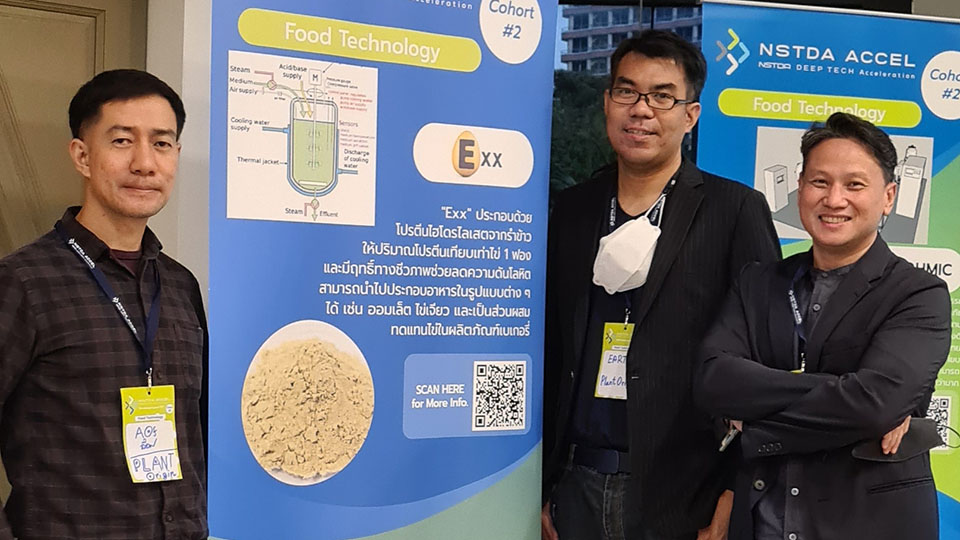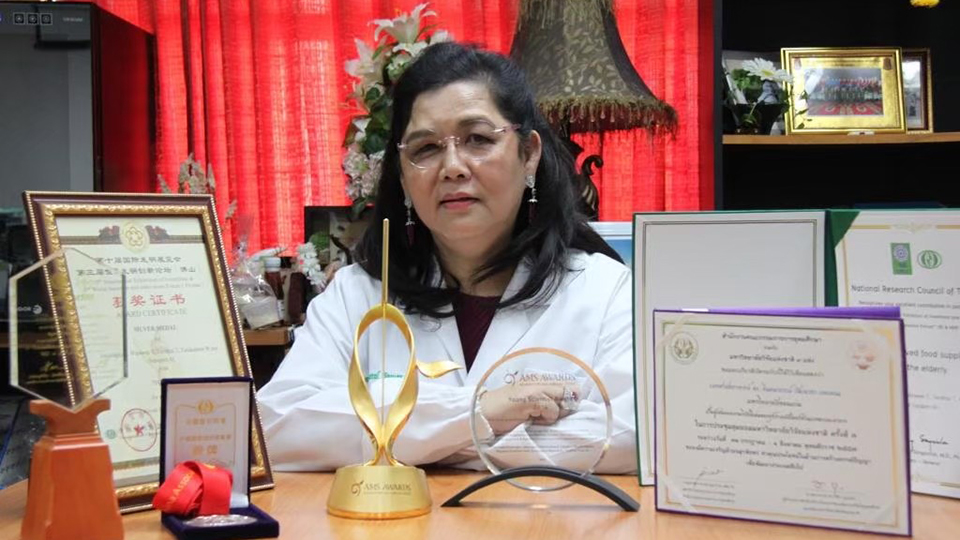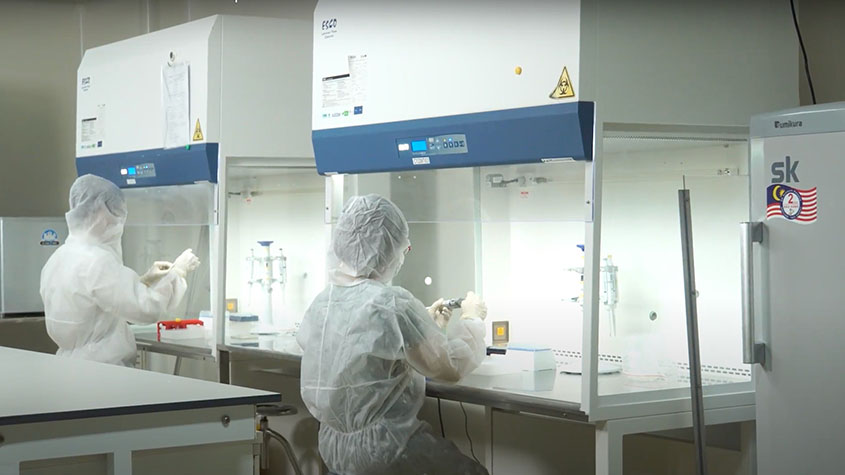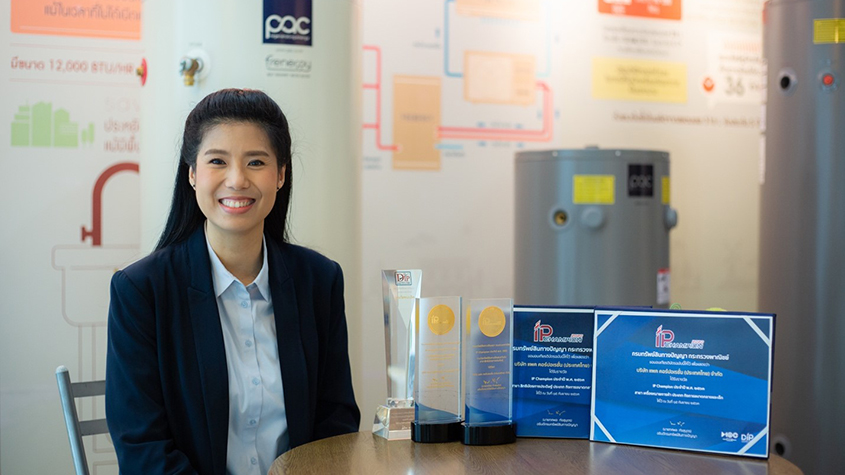From Rice Milling to GI Supporter, Rice Planting and Sustainable Packaging Innovator
Sinsamut (Sin) Srisaenpang wanted to become a musician, but as their only son, his parents wanted him to take on the successful rice milling family business. Embracing a career that was not his first choice, he is now not only the Managing Director of Srisangdao Rice Intertrade Co, commercializing Thai GI rice but also the founder of the Srisangdao Direct Seeding (Na Yod) Village project, helping farmers cut production costs and increasing revenues. Combining tradition and innovation, Srisangdao Rice promotes “Khao Hom Mali Thung Kula Rong-Hai” and offers new solutions to farmers.

The company is set in the Roi Et province, the area where Thai GI rice “Khao Hom Mali Thung Kula Rong-Hai” is produced. When the Thai government introduced the idea that the company should sell the geographical indication rice, Sinsamut was hesitant, as he did not understand what a geographical indication was and how it could help the business, although he still tried to support the government’s efforts, he said. Then he found out that GIs can bring a lot of benefits to Thai GI producers.
Sin was a speaker at a Regional Forum on Strengthening Brands, Designs, and Geographical Indications organized by the Department of Intellectual Property of Thailand, in collaboration with WIPO, in November 2022.
Understanding the value of GIs
When the Thai government invited him to the Thailand Trade Fair in 2019, it was an eye-opener. At the fair, he met a GI-enthusiastic European customer and realized GIs are a powerful marketing tool. As he learned more about the real purpose of GIs and the merit of the Sufficiency Economy, he realized that they fit into the numerous initiatives for agricultural development, food preservation, and production of nutritious food, helping farmers attain a sustainable quality of life, and producing high-quality products.
“Khao Hom Mali Thung Kula Rong-Hai”, much more than Jasmine Rice
Reflecting on this high quality, he said, “Khao Hom Mali Thung Kula Rong-Hai”, which is a soft fragrant rice was the first Thai GI registered in the EU in 2013 as a Protected Geographical Indication (PGI).
The “Khao Hom Mali Thung Kula Rong-Hai” is not the same as jasmine rice, Sin argued. Produced using traditional methods, the GI rice is only planted once a year with two varieties: RD15 and Khao Dawk Mali 105, while in other parts of the world, jasmine rice is harvested two or three times a year. “Khao Hom Mali Thung Kula Rong-Hai” has a flavor reminiscent of pandan leaves, he said.

According to the GI registration, ”Khao Hom Mali Thung Kula Rong-Hai” rice has to be planted exclusively in the area of Thung Kula Rong Hai, from April to August, and harvested between October and December. The specific taste and quality of this fragrant rice also come from the soil, which contains sodium and silica, and from the fact that the area relies mainly on rainwater, which can be scarce. Under those conditions, the rice plants are stressed, releasing more fragrance than any Thai Hom Mali rice grown in other areas of Thailand.
Sustainable Rice Production
The Srisangdao Direct Seeding Village is a project that promotes the yearly sowing of new seeds with the innovative direct seeding system so that farmers can grow stronger, healthier plants, he said. In the past, farmers used to produce weaker plants since they reused their seeds for three to four years. The direct seeding system is more financially sustainable, Sin said.

According to Sin, more and more farmers are also turning to organic culture and the Srisangdao Rice will be entirely organic in the next two years.
The company sells both brown and white “Khao Hom Mali Thung Kula Rong-Hai” rice at a price that is about 15 to 20 percent more expensive than ordinary rice, he said, noting that the quality is much higher.
Direct Seeding Rice - Helping Rice Farmers Make More with Less
However, having a successful brand is not the final aim of Sin and his family. Sin’s mother always wanted to help farmers. A firm believer in the Sufficiency Economy Philosophy, Sin knew that helping farmers to grow is a sustainable way of doing business.

Sin found out that one of the reasons why Thai farmers’ livelihood was not improving came from the way they plant rice in paddy-sown fields. He developed a new method called “Direct Seeding” and shared it with the farmers. The direct seeding innovation consists of reducing the number of seeds sowed per square meter. The rice harvested in the Thung Kula Rong-Hai area relies heavily on the amount of rain. Reducing the number of seeds alleviates the pressure for the rice plants to compete for water or nutrients, and allows them to receive more sun. According to Sin, this method leads to a two-fold increase in productivity, with a stringent reduction of seeds. This production method is not only adapted to the fluctuating weather conditions but also contributes to the highest quality product.
With the traditional farming method, farmers use an average of 35 kg of seeds per rai (0.16 hectare), with the direct seeding innovation, they only need 1 kg per rai, he explained. This reduction allows them to save some 1,000 Thai Baht (US dollars 87) per rai with output going from 320 to 600 kg per rai.
Srisangdao Direct Seeding Village Project
Convincing farmers of using this new farming method was the toughest, although critical for farmers, he said. At first, only 20 families were persuaded to try it. The Srisangdao Direct Seeding Village Project was established in 2019 to provide farmers with a better income and quality of life while producing premium quality rice.
However “many farmers are resisting the fact that you can grow more with less and still believe that the more seeds you sow, the more rice you grow,” Sinsamut explained. The Village Project now works with 100 farmers, growing rice over 3,000 rai (just short of 500 hectares).
International Branding and use of Biodegradable Rice Husk Packaging
Sin was determined to promote the “Khao Hom Mali Thung Kula Rong-Hai” and decided to repackage the rice to make it more attractive to international customers. He registered a new brand so he could sell the rice directly nationally and on the international market. Three years after his marketing efforts started, he finally had a very successful year and exported to Europe for the first time in 2022 to Austria, as well as Hong Kong and Israel.

Srisangdao Rice Intertrade Co prides itself on its sustainability efforts. After two years of research on potential sustainable packaging, the company produced an environmentally-friendly, biodegradable packaging made of rice husks. The original refined packaging holding one kilo of rice won 18 awards, some of them international.
Sinsamut explained that the company also encourages farmers to use rice stubble during plowing to preserve the nutrients in the soil instead of burning the fields, preserving the soil and limiting pollution.
Rice chaff is also used to feed a power plant and generate electricity.
Enrolling More Farmers to Enhance the Reputation of Thai Rice in the World
Sin plans to increase his work with farmers to expand the volume of GI rice he will export, which is expected to double in 2023. He said he would like to enroll more farmers to meet the growing demand, but keep growth at a moderate speed, as he finds “the quality of a balanced life is equally important as growth.”
“Commercializing ‘Khao Hom Mali Thung Kula Rong-Hai’ has been a life aspiration to support my King, my government, and my farmers,” Sin said.
The company will continue advocating the direct seeding system following the Sufficiency Economy Philosophy so that farmers can make a better income from their harvest, and secure a better future. However, “it is not always easy to talk with farmers, who are reluctant to change their ways, but I’m committed to making it happen”, he said. He is also hoping to help farmers convert to organic farming by teaching them how to reduce chemicals to the point when they do not need any. “This is a big challenge for us”.



